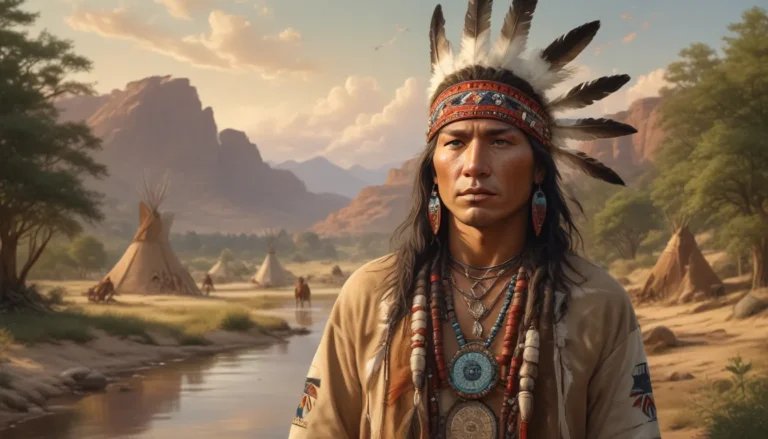The images in our articles may not match the content exactly. They are used to grab your attention, not to show the exact details in the text. The images complement the text but do not replace it.
The Long Winter of 1880-1881, a historical event that left an indelible mark on American history, was a period marred by extreme weather conditions. From blizzards and freezing temperatures to heavy snowfall, the Great Plains region in the United States bore witness to the resilience and fortitude of pioneers and settlers who braved the unforgiving elements in their pursuit of a better life. Let’s embark on a journey through time to uncover the challenges faced by individuals and communities, the extraordinary stories of survival and perseverance, and the enduring legacy of The Long Winter.
Unveiling Key Facts About The Long Winter:
- The Long Winter, also known as the “Little Ice Age,” spanned from 1883 to 1888, bringing extreme cold and heavy snowfall to the Northern Hemisphere, resulting in food shortages and economic hardships.
- This period sparked innovations in winter survival, fostered communal support, and serves as a stark reminder of the Earth’s complex climatic systems, showcasing human resilience in the face of adversity.
Delving Into The Harsh Winters Experienced During The Long Winter Era
The Long Winter, often referred to as the “Little Ice Age,” encompassed a series of unusually harsh winters from 1883 to 1888. These winters brought about extreme cold temperatures and heavy snowfall, disrupting life across the Northern Hemisphere. The relentless nature of this climatic anomaly led to widespread crop failures, food shortages, and economic challenges that profoundly impacted communities.
Understanding the Factors Behind The Harsh Winters During The Long Winter
The harsh winters of the Long Winter era were not merely coincidental but rather a result of complex meteorological phenomena. The eruption of the Krakatoa volcano in 1883 played a pivotal role in altering atmospheric conditions by releasing ash and aerosols into the air, leading to a temporary cooling effect. Additionally, variations in solar radiation and sunspot activity contributed to the extended period of frigid temperatures and heavy snowfall experienced during this time.
Impact on Agriculture and Food Supplies During The Long Winter
Agriculture bore the brunt of the Long Winter’s fury, with extreme weather conditions wreaking havoc on crop yields and food supplies. Farmers faced insurmountable challenges in cultivating their lands amidst freezing temperatures and heavy snowfall, resulting in diminished harvests and food scarcity. As a consequence, many communities grappled with famine and struggled to secure essential provisions for survival.
Social and Economic Consequences of The Long Winter
The enduring legacy of the Long Winter extended beyond meteorological impacts to trigger significant social and economic upheaval. The scarcity of food and resources exacerbated poverty and inequality, heightening social tensions within affected regions. Moreover, the economic ramifications of the Long Winter reverberated through various sectors, causing financial instability and hardships for countless individuals and communities.
Driving Innovations in Winter Survival and Resource Management
Amidst the challenges posed by the Long Winter, communities and individuals sought innovative solutions to cope with the harsh conditions. Improved insulation techniques for homes, inventive methods for preserving food supplies, and enhanced resource management strategies emerged as crucial tools for enhancing winter survival. These innovations underscored the resilience and adaptability of human communities in the face of adversity.
Impact on Historical Narratives and Cultural Representations
The enduring impact of the Long Winter is evident in the multitude of historical narratives and cultural representations that chronicle the hardships and resilience of communities during this tumultuous period. From oral traditions and folklore to written accounts and artistic expressions, the Long Winter has woven itself into the tapestry of historical and cultural narratives, serving as a testament to human endurance and adaptability in challenging times.
Fostering Communal Support and Solidarity During The Long Winter
In the midst of adversity, the Long Winter inspired communities to band together and provide mutual aid and support. Acts of kindness, cooperation, and communal assistance became lifelines during this trying period, highlighting the strength of human connections and the power of collective resilience in overcoming challenges.
Understanding The Earth’s Complex and Dynamic Climatic Systems
The Long Winter stands as a stark reminder of the intricate and dynamic nature of the Earth’s climatic systems, emphasizing the profound impact of natural phenomena on human societies and ecosystems. This enduring legacy underscores the importance of comprehending and adapting to the complexities of climate variability and its widespread implications for global communities.
Spurring Scientific Inquiry and Research Into Climatology and Environmental History
The extraordinary climatic events of the Long Winter fueled a resurgence of interest in the study of climatology and environmental history. Scientists and researchers delved into historical records and climatic data from this period, seeking to unravel the underlying mechanisms and broader implications of this prolonged climatic anomaly. These efforts have contributed to advancements in understanding long-term climatic patterns and their societal impacts.
Celebrating Human Resilience and Adaptability Throughout The Long Winter
The enduring legacy of the Long Winter is a testament to the remarkable resilience and adaptability of human communities faced with formidable challenges. The indomitable spirit displayed by individuals and societies during this prolonged period of hardship serves as an enduring inspiration, highlighting humanity’s capacity to overcome adversity and thrive.
Embracing The Complex Interplay of Human History and Environmental Dynamics
The Long Winter continues to resonate as a compelling chapter in the interconnected tapestry of human history and environmental dynamics. Its impact serves as a stark reminder of the intricate relationship between climatic phenomena, societal responses, and cultural narratives, enriching our understanding of the enduring interplay between human experiences and the natural world.
In Conclusion
The Long Winter of 1880-1881 stands as a pivotal event that shaped the experiences of individuals and communities, leaving an indelible mark on American history. Its impact on agriculture, economy, and social dynamics underscores the profound influence of environmental factors on human societies. The resilience and resourcefulness displayed during this challenging period exemplify the strength of the human spirit in the face of adversity, reinforcing the importance of preparedness and adaptation in an ever-changing world.
FAQs
What were the main causes of The Long Winter?
The Long Winter was primarily attributed to a combination of climatic factors, including prolonged extreme cold and heavy snowfall. These conditions were influenced by various meteorological phenomena, such as the polar vortex and atmospheric circulation patterns.
How did people adapt to the challenges posed by The Long Winter?
During The Long Winter, individuals and communities implemented various strategies to navigate the harsh conditions, including conserving food supplies, utilizing alternative heating sources, and fostering communal support networks. These adaptive measures were vital for survival and showcased human resilience amidst adversity.
As we bid farewell to winter and welcome the blossoming beauty of spring, let’s reflect on the captivating history of The Long Winter and the enduring spirit of resilience it embodies. From tales of survival and innovation to communal support and scientific inquiry, the legacy of The Long Winter continues to inspire and educate generations to come.






